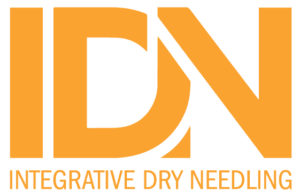Dry Needling: A Possible Detrimental Treatment After Total Hip Arthroplasty
Cureus. 2024 Oct 21;16(10):e72053. doi: 10.7759/cureus.72053. eCollection 2024 Oct. ABSTRACT This case study describes a severe and rare complication following the placement
Home / My Account / Dry Needling Research
Sports Health. 2024 Aug 5:19417381241263338. doi: 10.1177/19417381241263338. Online ahead of print.
ABSTRACT
CONTEXT: Patellar tendonitis (PT) is a common degenerative disease of the patellar tendon that seriously affects the sports careers of elite athletes and activities of daily living of sports enthusiasts. Injection therapy is a prevalent invasive treatment for PT.
OBJECTIVE: This work comprehensively analyzes various injection treatments for PT that consider agent type and characteristics, frequency, and assessment timepoints by meta-analysis.
DATA SOURCES: PubMed, Embase, and the Cochrane Library were sources of data.
DATA SELECTION: Randomized controlled trials (RCTs) analyzing the effect of various injection strategies on the treatment of patients with PT were considered.
STUDY DESIGN: Systematic review and meta-analysis.
LEVEL OF EVIDENCE: Level 2.
DATA EXTRACTION: First author, year of publication, research location, registration information, patient type, sample size, age, sex, intervention, control treatment, and follow-up period in each study were extracted.
RESULTS: Nineteen RCTs were included in the analysis. In the network meta-analysis of Victorian Institute of Sports Assessment-Patellar (VISA-P) outcomes, polidocanol (standardized mean difference (SMD), 6.52; 95% CI 4.75, 8.30; P < 0.01), tenocyte-like cells (SMD, 4.08; 95% CI 2.92, 5.25; P < 0.01), and leukocyte-poor platelet-rich plasma (LP-PRP) plus high-volume image-guided injection (HVIGI) (SMD, 1.56; 95% CI 0.62, 2.50; P < 0.01) were significantly superior to noninjection conservative treatment, mainly at the 6-month follow-up timepoint. For visual analog scale results, multiple dry needling (DN) (SMD, -1.78; 95% CI -2.56, -1.00; P < 0.01), LP-PRP (SMD, -0.71; 95% CI -1.31, -0.12; P = 0.02), and LP-PRP plus HVIGI (SMD, -1.31; 95% CI -2.22, -0.39; P < 0.01) were significantly superior to blank, which was also mainly at the 6-month timepoint.
CONCLUSION: Injection-related treatments: polidocanol, tenocyte-like cells, LP-PRP, and multiple DN showed potential short (1-3 months) or medium (6 months)-term treatment benefits. There is still no evidence for injection interventions with long-term therapeutic benefit.
PMID:39101544 | DOI:10.1177/19417381241263338
Cureus. 2024 Oct 21;16(10):e72053. doi: 10.7759/cureus.72053. eCollection 2024 Oct. ABSTRACT This case study describes a severe and rare complication following the placement
Clin Breast Cancer. 2024 Oct 23:S1526-8209(24)00285-4. doi: 10.1016/j.clbc.2024.10.007. Online ahead of print. ABSTRACT OBJECTIVE: Literature regarding nonpharmacological interventions (NPI) for PMPS or
Arch Dermatol Res. 2024 Nov 13;317(1):13. doi: 10.1007/s00403-024-03449-4. ABSTRACT Melasma is an acquired dysfunction of melanogenesis, that poses a major therapeutic challenge
© Integrative Dry Needling 2023 | All rights reserved | Designed by Weblink
Powered by ![]()
any IDN Course!
*Valid for new registrations only and can not be combined with other discount codes. Offer Expires: 7/7/2024

Not sure which course is right for you? No problem – we created an intuitive process to help!